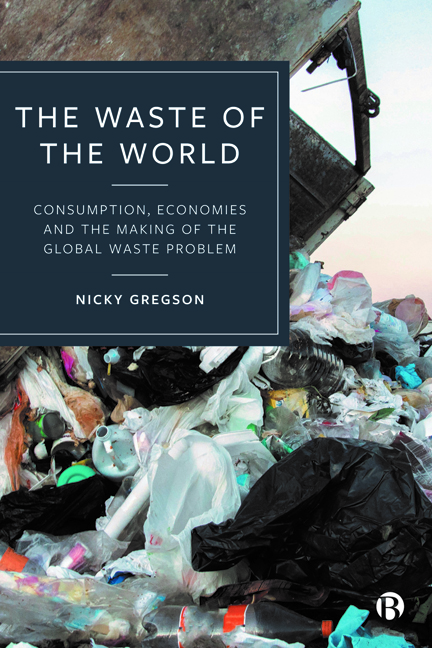Book contents
- Frontmatter
- Contents
- Acknowledgements
- Preface
- 1 The Global Waste Problem and How to Think about It: Or, how to understand the ‘too much waste’ problem
- 2 Discard, Social Order and Social Life: Or, discard is foundational to understanding waste
- 3 Consumption, Consumer Practices and Consumer Discard: Or, how consumer discard relates to economies
- 4 Conduits, Value Regimes and Valuation: Or, following consumers’ discarded things
- 5 Recommodifying Discard: Or, the challenges of turning discard into an economic good
- 6 Waste, Money and Finance: Or, how turning discard into waste turns waste into an energy resource and an asset
- 7 Future Directions: Or, rewiring waste through the three Ds (decarbonization, digital and discard)
- Notes
- References
- Index
5 - Recommodifying Discard: Or, the challenges of turning discard into an economic good
Published online by Cambridge University Press: 18 January 2024
- Frontmatter
- Contents
- Acknowledgements
- Preface
- 1 The Global Waste Problem and How to Think about It: Or, how to understand the ‘too much waste’ problem
- 2 Discard, Social Order and Social Life: Or, discard is foundational to understanding waste
- 3 Consumption, Consumer Practices and Consumer Discard: Or, how consumer discard relates to economies
- 4 Conduits, Value Regimes and Valuation: Or, following consumers’ discarded things
- 5 Recommodifying Discard: Or, the challenges of turning discard into an economic good
- 6 Waste, Money and Finance: Or, how turning discard into waste turns waste into an energy resource and an asset
- 7 Future Directions: Or, rewiring waste through the three Ds (decarbonization, digital and discard)
- Notes
- References
- Index
Summary
Since the beginnings of capitalism, discard has been recommodified. There is nothing new about this. Scratching around in municipal dumps, searching amid the mountains of abandoned detritus for materials of value – stuff that can be salvaged, accumulated and sold – is an activity that has been found the world over for centuries. It is a tactic for ‘getting by’; an age-old indicator of livelihoods marked and defined by living in conditions of extreme poverty. Scavenging provides the defining contemporary image of the landfills and dumps of the global South: one of women and children sifting carefully, methodically through mountains of rubbish while living in its immediate proximity, surrounded by societies’ detritus. Harrowing as such images are to western eyes, it is important to recognize that scavenging and salvage activity was as much a feature of the dumps that littered the landscape of 19th-century England as it is of today's cities of the South. One only has to turn to some of the novels of Charles Dickens to find precisely the same close association of extreme poverty and rubbish-dependent livelihoods. The more unequal societies, the more significant discard is for livelihood strategies, with large numbers dependent on rubbish livelihoods.
The recommodification of discard, however, is not just about scavenging and salvage, notwithstanding that this is the focus for most of the academic literature in the social sciences. It also encompasses the trade in used goods and the transformation of discard by varying combinations of labour and capital, such that discarded things, or their constituent components and materials, are opened up to be bought and sold. In such a way, scavenging and salvage activities connect to the intricacies of the value chain in scrap. Typically, all this economic activity is now lumped together under the catch-all umbrella term of ‘recycling’, but that term includes a range of activities that, in actuality, are distinct. Not only do they operate in distinctive markets, they also have widely differing implications for debates about sustainability. At one end of the range, and without doubt the most sustainable of these activities, is reuse, where discarded used goods are resold to fulfil the same function that they were originally designed for.
- Type
- Chapter
- Information
- The Waste of the WorldConsumption, Economies and the Making of the Global Waste Problem, pp. 104 - 132Publisher: Bristol University PressPrint publication year: 2023

